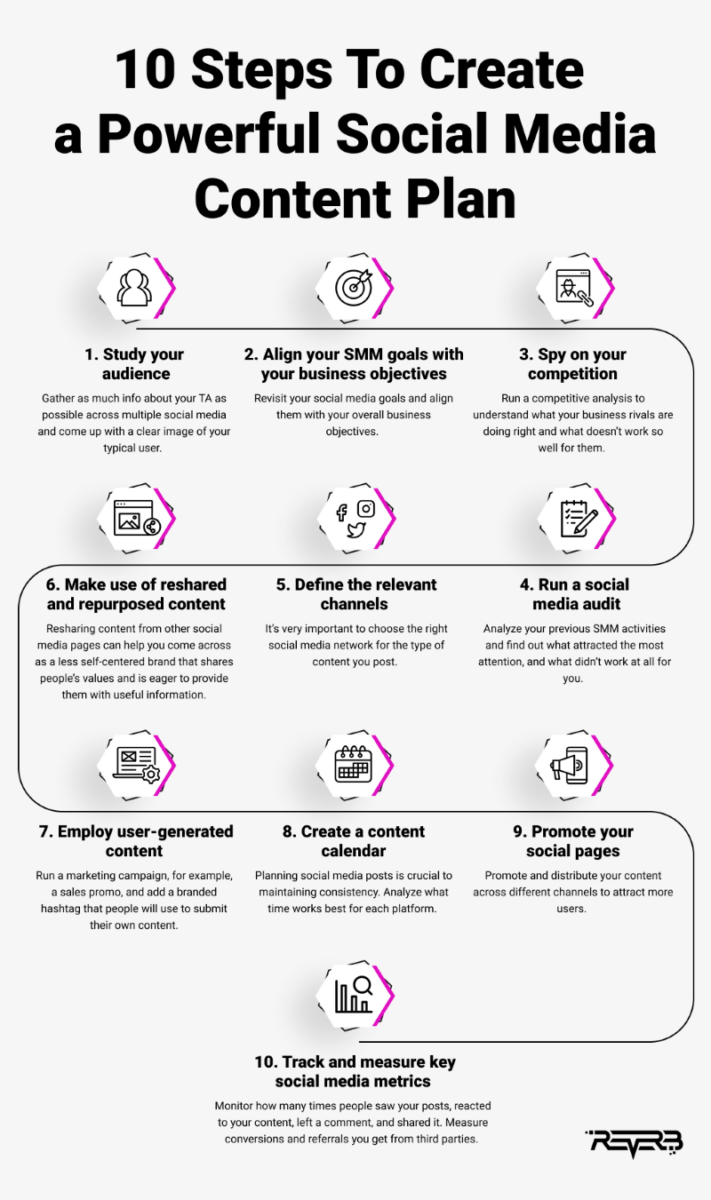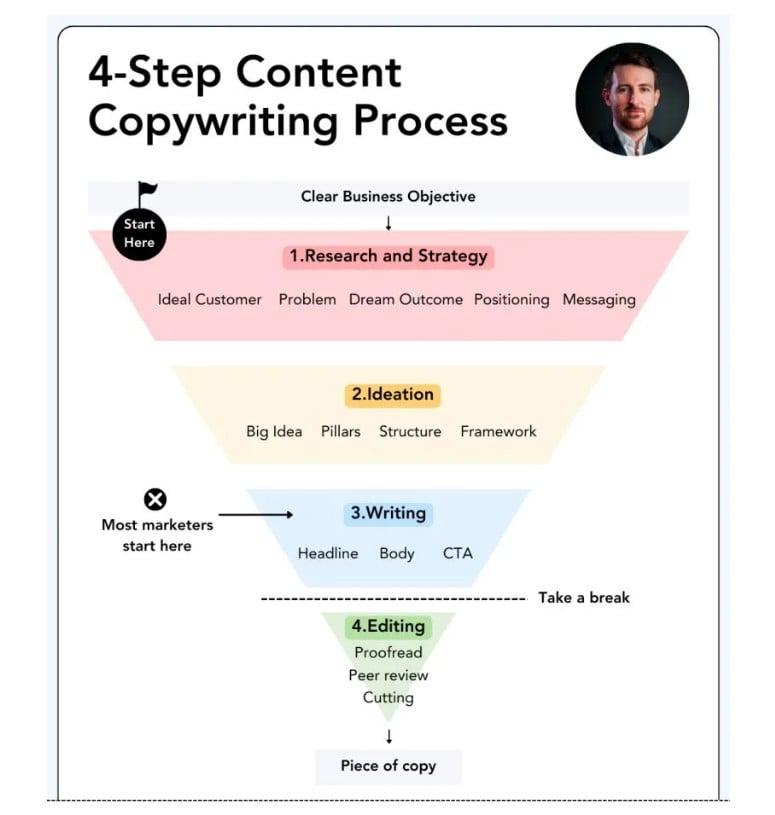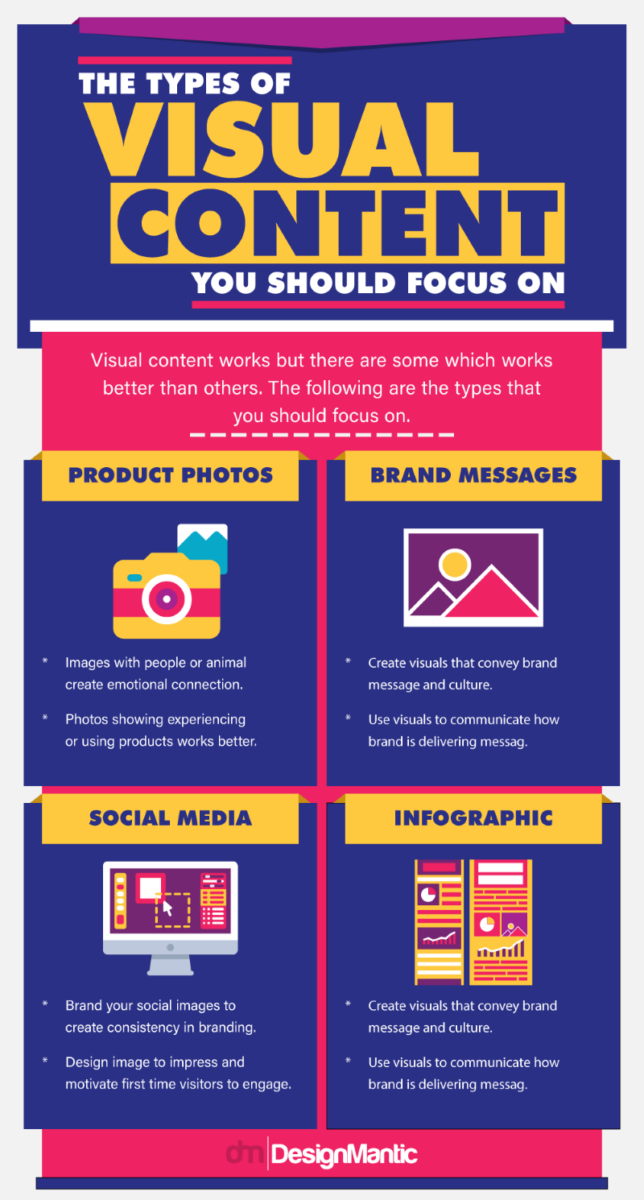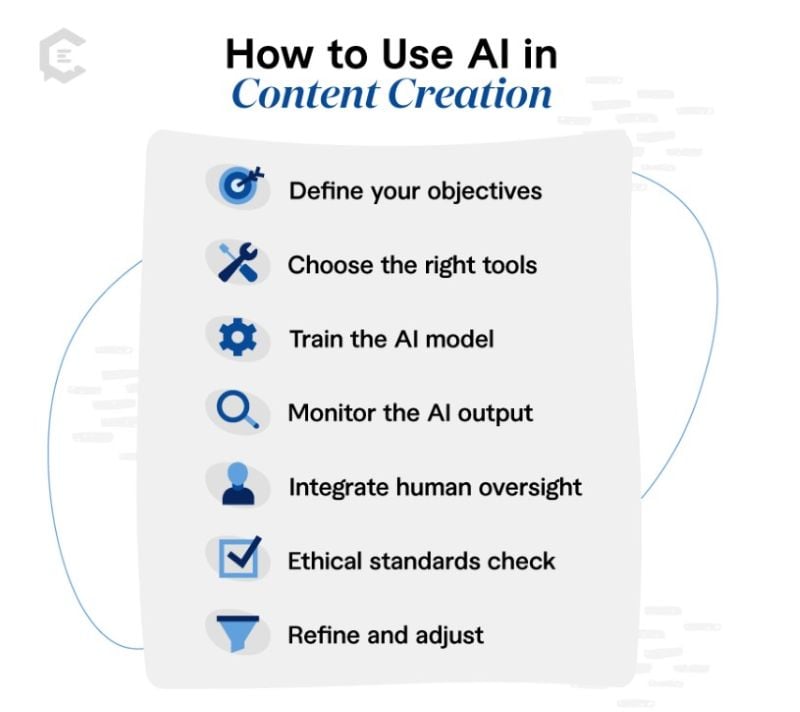
How to Create Content: A Step-by-Step Guide for Beginners
Creating content can feel like a daunting task, especially for beginners navigating the digital landscape. Nevertheless, content creation is an essential skill in today’s information-driven world, where compelling content can capture attention and drive engagement. Understanding the foundations of content creation is vital for anyone looking to make their mark online.
With the right approach, you can transform your ideas into impactful pieces that resonate with your audience. From planning and writing to optimizing and promoting, each step plays a crucial role in ensuring your message reaches the right people. As you embark on this journey, knowing the basics will empower you to create high-quality content with confidence.
I wanted to create a guide based on my own nearly 20 years of blogging and content creation across the full spectrum of text, audio, and video to walk you through a step-by-step process for effective content creation. I’ll cover everything old school, from initial planning to the newest skill of leveraging AI tools that can streamline your workflow. Get ready to unleash your creativity and start producing valuable content that truly stands out.
Note that while this content creation process is geared towards textual content like blogs, it applies equally to other content mediums as well.
Step 1: Planning Your Content

Effective content creation begins with meticulous planning. Developing content ideas will help keep the creative wheels turning. To effectively put together your own editorial calendar, I have identified the essential steps below:
First, identify your target audience. Understanding the needs of your audience is vital to create content that resonates and engages with that audience. Before you create any type of content, determine who your target audience is and adjust your planning practices.
Second, once you’ve identified your audience, select the best topic for your content. Keyword research and trends are useful in pinpointing audience sentiment. By using both keyword research and trends, you are more likely to create valuable content for your audience.
Incorporating keywords and trends and a clearly defined audience helps ensure that your content is both targeted and relevant. Content creators can make the mistake of putting out fluff. Avoid this by creating actual content that addresses audience needs.
Finally, outline your content. A clear structure can give your piece of content a logical flow. A logical flow makes content easier to follow and makes it more impactful. Your content format matters!
As you create your social media content, list key points you are covering. Your message should be concise and coherent. Consider these steps:
- Identify Audience: Research your audience demographics and interests to properly tailor your content.
- Select Topics: SEO tools are effective for finding keyword ideas for your social media content and web copy.
- Outline Content: Create a logical structure for all types of content you create to maintain clarity.
Once you have identified your audience, selected your topics, and completed your outlines, format your content. Readability is essential, no matter the types of content you put together.
Use headlines, bullet points, and short paragraphs. This type of formatting makes reading and comprehension easier for your audience while encouraging audience engagement and optimizing content for search engines.
By following the steps I have outlined, you will be equipped to produce high-quality content that meets your audience’s expectations while fulfilling your content creation goals.
Further Reading: The 18 Elements of Successful Content Planning
Step 2: Writing & Structuring Your Content

Creating valuable content is essential. Developing your own engaging and clear content does not have to be a frightening prospect. Instead, begin by breaking down your content with headings and subheadings.
Using heading and subheadings makes even the simplest subject pleasant visual content to take in. When content is properly outlined, readers can easily navigate to relevant content and have their needs met.
Headings and subheadings help organize your thoughts and guide readers through a piece of content. Short, concise sentences and paragraphs improve readability, making your content creation a collection of valuable resources for your audience.
Simple words are best whenever possible, but do not be afraid to use advanced terms and jargon if they add precision or clarity. Social media content creation must be easy enough to understand, but complex enough to maintain an air of authority.
Writing for SEO is crucial. Keyword stuffing, however, is a common practice and can actually hurt any relevant content you produce. Focus on natural integration of keywords, instead.
Natural keywords will enhance your content’s relevance for search engines and will be more attractive to your audience, rather than reading like copy directly from a sales team.
Trying to Keep Up with Digital Marketing?
Just released: my new book to help small businesses, entrepreneurs, and marketers master digital marketing in today’s digital-first world.
Drawing on my Fractional CMO experience, Digital Threads simplifies complex strategies into clear, actionable steps for success.
Transform your business today—grab your copy! Click the cover or button below to buy on Amazon.
I have created a quick checklist for clarity:
- Use bullet points or lists to highlight key information. Bullet points help content stand out.
- Include visuals like tables or charts for complex data. Content strategists include visuals to capture and maintain attention.
- Vary sentence length to maintain rhythm and flow. Varied sentence length helps lend a natural cadence to your content marketing efforts.
Straightforward language is ideal. Best practices suggest only using jargon when necessary. Write a natural, friendly tone into your content development plan.
I have put together an example of clear construction below:
| Section | Details |
|---|---|
| Introduction | State the purpose and scope of your content. |
| Main Points | Use subheadings for each major point to maintain cohesion. |
| Conclusion | Summarize key insights and next steps to support your content goals. |
By following these guidelines, you can produce high-quality, engaging content that resonates with your ideal customer.
Step 3: Designing Visuals & Media for Engagement

Designing visuals for your content is crucial for engagement and can significantly enhance your message. Visuals can be high-quality video content, infographics, or images.
Images, infographics, and videos can add depth and help break up text. Text interspersed with visuals can make content more digestible. Adobe Express is my recommended free option to use to create visual content.
If you are interested in more professional tools, you can invest in more advanced tools included in an Adobe Creative Cloud license. These tools have more advanced features to help you create eye-catching visuals to add to an overall effective content strategy.
As you put together your visuals, follow best practices. These include:
- Ensure high resolution for professional quality. Social media content creation requires an eye for attention.
- Align visuals with your brand’s color palette. Amazing content should follow your standard colors and designs.
- Use simple and clear infographics to convey complex data. Informative content does not need to be confusing! Simplify complex ideas for your audience.
- Keep videos short and to the point for maximum impact. Your content marketing strategy should aim for brevity.
- Place images near related text to improve comprehension and retention. Pairing images and information can bridge content gaps in your audience’s memory.
The visuals you find for your content topics should enhance not overshadow your content. Experiment with different placement to determine what maximizes audience engagement and adjust as necessary.
Incorporate visuals strategically within your content calendar for best results across search engines and social media channels.
Ultimately, refining your use of visuals will help establish you as an industry leader and attract your ideal customer.
Further Reading: The 15 Best Infographic Maker and Graphics Tools for Your Marketing and Business Needs
Step 4: Editing & Optimizing for SEO
Editing and optimizing your content for SEO is crucial to achieving success in the digital landscape. Proofreading your content ensures content clarity and makes it easier for your target audience to receive and understand your messaging.
Using tools can help content teams develop all kinds of content for social channels. Tools like Grammarly and Hemingway Editor can help you refine your writing.
As you write for SEO, focus on key elements. Compelling title tags and concise meta descriptions are essential. Fresh content goes a long way, but SEO makes that fresh content rank well on search engines to attract potential customers.
Internal linking is another important strategy to improve customer journey scores and SEO ranking. Internal links connect related content, which improves navigation and increases authority.
SEO plugins can be used on your site to streamline optimization, which can help you identify areas you need to improve. This can extend to your social platforms, as well, to help you optimize all of your content.
Consider the following structure for SEO success:
| SEO Element | Description |
|---|---|
| Title Tags | Optimize with keywords to rank highly in searches. |
| Meta Descriptions | Summarize your content using descriptive keywords. |
| Internal Linking | Connect relevant pages to make site navigation seamless and easy. |
To make sure your piece of content is engaging, format it using short paragraphs and bullet points. Readers are more likely to stay and read if their eyes can quickly and easily scan the page.
To make sure that your content continues to perform well, conduct regular content audits to make sure you are consistently delivering high-quality content. From trendy pieces to evergreen content, quality is essential.
Aim for value and relevance to stand out as an industry leader, and improve visibility with effective editing and optimization. This will pull double duty: ranking high on search engines, and convert your readers into loyal email subscribers.
After all, are you likely to subscribe to an email list if content is inconsistent and difficult to read?
Step 5: Publishing & Promoting Your Content
Publishing and promoting your content effectively is key in reaching your target audience and engaging with potential customers. This begins with selecting the best platforms for effective distribution.
As you go over your content development strategy, consider your audience’s presence across different social media channels, as well as email lists and other distribution channels.
Repurpose existing content to suit different formats. A single blog post, for instance, can transform into a video. A video can be used as a social media post, and a social post can be converted into an email newsletter. All can reach a broader audience.
Follow best practices for sharing. These include:
- Social Media: Engage with your audience through comments and shares.
- Email Marketing: Send personalized content to email subscribers.
- SEO: Optimize your content with relevant keywords to rank on search engines.
Here’s a simple table to guide your content repurposing:
| Original Format | Repurposed Formats |
|---|---|
| Blog Post | Social Media, Video, Email |
| Video | Blog Posts, Social Media Clips |
| Blog Content, Social Media Content, Videos |
Finally, listen to your audience’s feedback and adjust your strategies accordingly. This adaptable approach ensures high-quality, valuable content that resonates and engages with your audience long-term.
Further Reading: 12 Content Promotion Ideas to Supercharge Your Digital Marketing in 2025
Bonus: How AI Can Help You Create Content Faster

Content creation does not have to be a time-consuming task. With AI-powered tools, the content creation process can be pared down, while still maintaining the essential human touch.
Tools like ChatGPT and Jasper offer numerous benefits. Most notably, they can help you brainstorm by generating topic ideas, drafting blog posts, and offering editing support to create high-quality content.
Despite the onset of AI and other technological advances, human creativity remains a crucial element of content creation. AI is great for suggesting and refining, but people provide unique insights and emotional intelligence.
In essence, humans need to engage with other humans. AI can lessen the load, but should not be used to replace engagement with potential customers.
The ways I like to use AI tools include:
- Brainstorming: Generate fresh topic ideas and outlines using AI tools.
- Writing: Accelerate the drafting process by putting in keywords and parameters.
- Editing: Improve grammar and refine content for clarity to smooth out your final product.
While AI improves speed and efficiency, your unique voice is key. AI efficiency must be balanced with human efficiency to produce engaging content that resonates with your audiences and converts visitors to customers.
Further Reading: AI in Content Marketing: Benefits, Ways to Use, and 5 Case Studies
Start Creating Content Today!
Get started creating content today using my straightforward approach that streamlines the process of creating. Begin with planning, and understanding your target audience. Decide on content types that resonate with your audience.
Use an editorial calendar to organize any topic ideas you may have put together. While writing the items on your calendar, focus on producing high-quality content to address your ideal customer’s needs.
Keep your language clear and all of your formatting cohesive and engaging. A content audit can help in this goal by identifying gaps and strengths in your existing strategy.
Don’t forget optimization! Align your piece of content with search engine optimization best practices to enhance your visibility across search engines. While you practice SEO strategies, remember to think about…
Promotion! Utilize social media platforms and email marketing to reach potential customers. Distribute your content across different channels to maximize the impact of your work.
I have developed a quick checklist to help you streamline your process. It includes:
- Identifying your target audience.
- Planning content ideas using a content calendar.
- Writing engaging content with a focus on quality.
- Optimizing for search engines.
- Promoting content across social media channels.
Implementing this simplified content creation process allows you to consistently produce valuable, engaging content. Refine and repeat to amplify results and reach your content goals.
Content creation doesn’t have to be complicated. By following this structured approach—from planning and writing to optimization and promotion—you’ll be able to create content that not only engages but also drives results. The more you refine your process, the easier and more effective content creation will become!
Further Reading: Best 20 Content Creation Tools Every Creator Should Know









